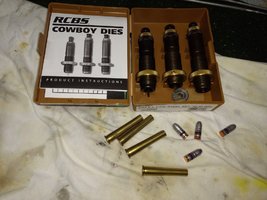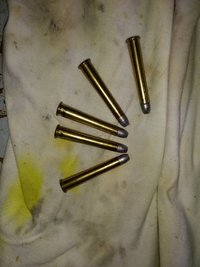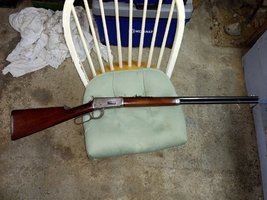The Goose
NES Member
Just picked up a Winchester 94 made in 1910 and chambered in .32-40. Luckily it came with 20 rounds of loaded ammo, but they were reloads of unknown origin so I pulled the bullets and dumped the powder. I had already ordered a set of RCBS dies and have tons of 170 gr. gas checked cast bullets from my buddy Patriot (Richard). I loaded up my 20 cases with 16 grs if 5744. This is a cool old round and cannot wait to hit the range. As I sadly watch the snow come down.






